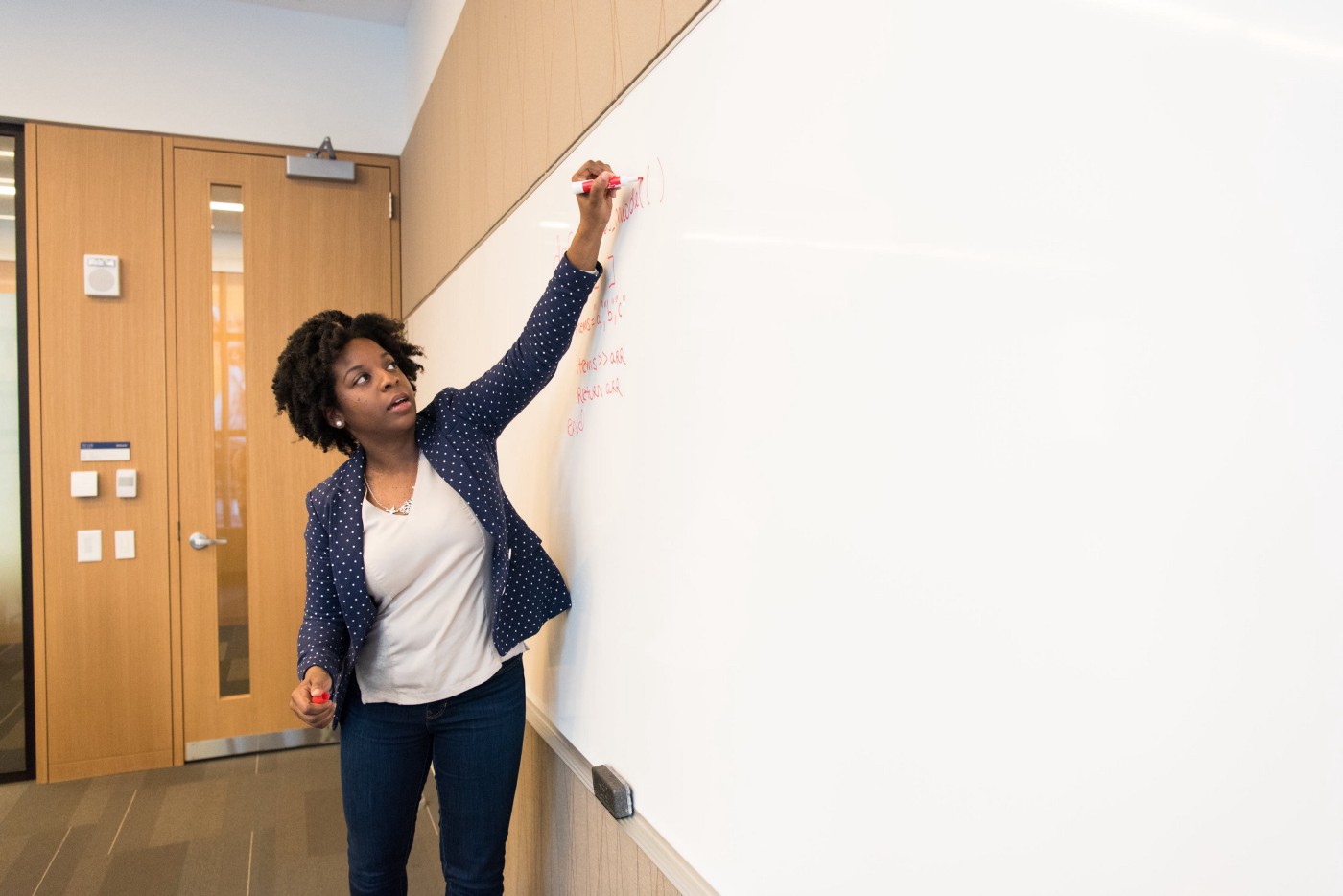Would There Be More “Math Kids” with a Project-Based Approach?
I have a confession to make: When I was in ninth grade I got straight C’s…

I have a confession to make: When I was in ninth grade I got straight C’s in algebra. I was generally a good student, so this was a real aberration. My surprised parents asked my math teacher about it and were told, “he’s just not a math kid.” I still remember sitting at my desk in math class and showing the teacher my feeble attempt at solving a problem, and his half-smile as he said the answer was “something like that” and walked away. Some help he was.
I was not alone, of course. There are many students who learn that they are “just not math people.” This belief then becomes a barrier to learning deeply, to taking advanced courses (not just in math but STEM generally), to applying to college, to considering many career paths—and to achieving greater educational equity in our society. This happens because the math curriculum dictates a certain kind of pedagogy. But I’m not blaming teachers.

Teachers of most subjects in high school today feel the pressure to “cover the content” and prepare students for the all-important tests, or for the next course they take, or for college. Many teachers must use curricula that cover an overwhelming long list of topics, and feel real pressure to cover those topics, often at the expense of depth of understanding. This is especially the case in mathematics. Teachers generally teach the way they were taught—and most math teachers were not like me, puzzling over those abstract x’s and y’s. They were the kids who “got it” and even liked it, even when they were taught via traditional instruction.
I know there are many, many math teachers who would not have walked away from a struggling student. I know many math teachers try to make the subject interesting and have a toolkit full of different instructional strategies (more than my explain-at-the board, then “do the odd-numbered questions in Chapter 4” teacher did). And I know there is a greater emphasis on “real-world” connections in math education these days.

The Heart of the Math Problem
I’m still not sure any of this would have helped a kid like me. The issue is something more fundamental. It’s about why we teach math, not just how. It’s about answering those age-old questions students ask: When will I ever use this? Why do we have to learn this? It’s not very satisfying to hear, “because it’s on the test” or “because you’ll need it later.” Even “because you need to pass this course to graduate and get into college” only goes so far at motivating a young person.
Math teachers are caught up in the decades old “math wars,” pitting the “proceduralists” against the “conceptualists.” One side emphasizes mastering skills and developing fluency and automaticity. The other emphasizes understanding the meaning of mathematical concepts. The two camps acknowledge that both are needed; it’s mostly a matter of where to start when teaching math.

The debate is missing the heart of the problem, according to Karim Ani, author of the recent book “Dear Citizen Math.” Procedural fluency, conceptual understanding, and solving problems are fine, but improving how we teach these things is only tinkering around the margins. The bigger issue is answering that perennial question, what is a math education for? He argues:
“Mathematics is larger than we’ve traditionally envisioned. As math educators, we have the opportunity to help students think critically about important issues in the world and to emerge from our classrooms as more curious participants in society.”
To put it another way, what’s missing is the “heart” of the math problems we ask students to solve. Students aren’t given a reason to care about learning math; there’s no emotional connection, which is what many young people need in their education. A math teacher I know who uses a project-based approach explains her goal: “Engage their hearts so their minds will follow.” When I was trying to learn algebra, my heart was not in it.
Project-Based Learning and Mathematical Modeling
Let’s take a closer look at what a project-based approach in math might look like.
First, a brief review of what we mean by project-based learning. We mean students learn by doing projects—although I always hasten to add that there is still a place for some of what are thought of as “traditional” practices in a project. An engaging project creates an authentic “need to know” for students; it creates a meaningful context for learning math.

A PBL approach enhances many of XQ’s Learner Goals—goals that aim to develop students who are deeply engaged in their own learning and fully prepared for all that the future has to offer. A project-based approach aligns with many of XQ’s Design Principles too and creates learning environments where student experience is at the center.
According to Jason Zimba, an author of the Common Core math standards, “There are roughly two kinds of learning that stick. One is where you make connections and say ‘a-ha!’ because the subject hangs together, and that has to do with the subject matter of the discipline. The other is when you see that it’s powerful, and it endows you with power to understand and make an impact on real world issues…It would be nice to think there would be classrooms where both those forms of excitement are happening.” (Zimba, in 9/27/2021 interview)
A project-based approach in the math classroom would give students that sense of power, when they tackle projects with a real-world purpose. These kinds of projects are a natural fit with mathematical modeling, which is explained this way in the Common Core State Standards:
“Modeling links classroom mathematics and statistics to everyday life, work, and decision-making. Modeling is the process of choosing and using appropriate mathematics and statistics to analyze empirical situations, to understand them better, and to improve decisions… in physical, economic, public policy, social, and everyday situations…”
This approach implies that the teaching of math can start with the situation where math can be used—i.e. the project—rather than with the math topic itself.
Here’s Karim Ani’s take on the same idea:
“We must distinguish between mathematics as a subject to look at and mathematics as a lens to look with. In addition to activities that use an ostensibly “real world” scenario to illustrate some underlying mathematical procedure or concept, we must incorporate ones in which students apply these procedures and concepts to learn something new about the world. It isn’t enough to use foul shots as a context for parabolas and milkshakes as a setup for linear equations. We must also provide students with opportunities … to use parabolas to debate whether baseball stadiums should be standardized and linear functions to analyze the effects of speeding fines on low-income communities.”

The Common Core gives these examples of situations that involve the “creative process” of mathematical modeling:
- Estimating how much water and food is needed for emergency relief in a devastated city of 3 million people, and how it might be distributed.
- Designing the layout of the stalls in a school fair so as to raise as much money as possible.
- Analyzing stopping distance for a car.
- Modeling savings account balance, bacterial colony growth, or investment growth.
- Analyzing risk in situations such as extreme sports, pandemics, and terrorism.
There are more real-world situations like this in the Achieve the Core companion resources. All of the above could be the basis for a project-based learning experience.
The hallmarks of high quality PBL are reflected in this approach to teaching math: authenticity, inquiry, intellectual rigor, student agency, applied learning, creativity, and collaboration. Projects that use mathematical modeling would answer the “why are we learning this?” question. Such projects could focus on issues that are personally meaningful or important to students, from building a musical instrument to financial planning to addressing a social justice issue.
And, to get back to the heart of the matter, imagine how engaging this approach would be for students. It would help make every kid a math kid.
There are many complexities and barriers to teaching math with a project-based approach, some of which, like standardized tests, are beyond a teacher’s control. There are legitimate concerns, and lots of questions—too many to get into in this post, so we’ll have to save that for others to come. For now, just imagine the possibilities!
Author: John Larmer

Author Bio: John Larmer is an expert in project-based learning (PBL). He began his career in education as a high school teacher. For 20 years he was a director and editor in chief at the Buck Institute for Education/PBLWorks, and authored several books on PBL for K-12 teachers, including Setting the Standard for Project Based Learning (ASCD 2015). He is now an independent consultant, writer, and editor.









